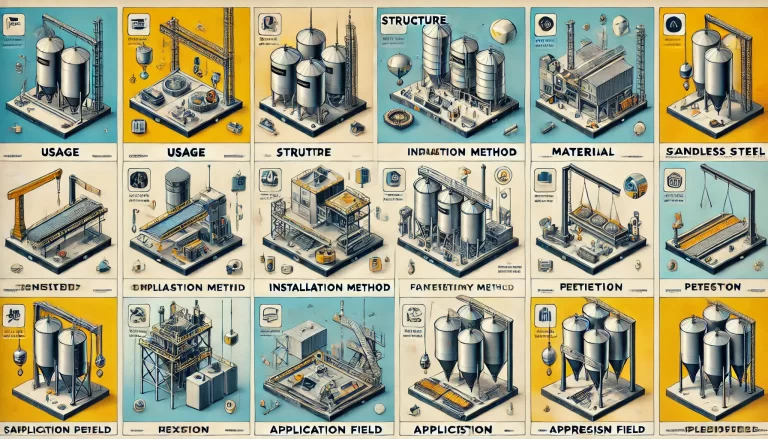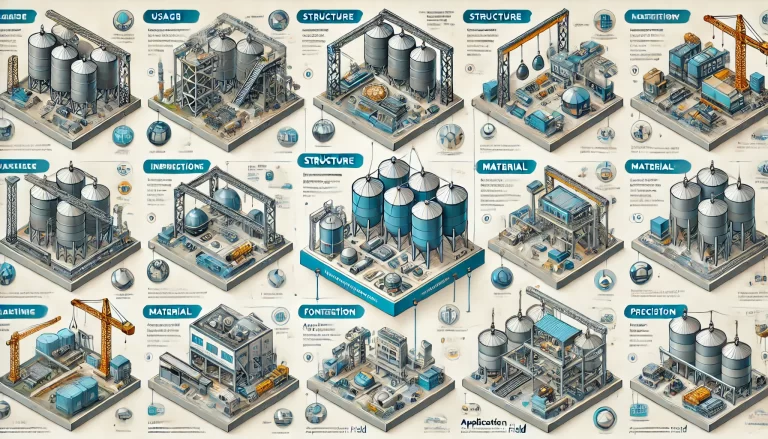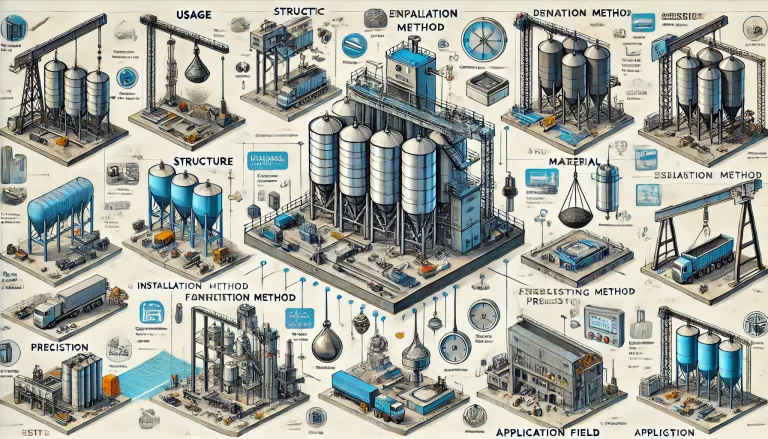Introduction
Weighing modules play a critical role in various industries, enabling precise weight measurements in both static and dynamic applications. From industrial material handling to laboratory precision weighing, these modules are integral to ensuring accuracy, efficiency, and safety in operations. Understanding their classification can help professionals select the appropriate module for their specific needs. This article provides an in-depth overview of weighing module classifications based on usage, structure, installation, material, functionality, precision, and application fields.
1. Classification by Usage
1.1 Static Weighing Modules
- Definition: Designed for scenarios with minimal lateral forces and static loads.
- Application: Commonly used in weight detection of storage silos, hoppers, and tanks.
- Key Feature: These modules can be easily installed on containers of various shapes.
1.2 Dynamic Weighing Modules
- Definition: Built to withstand substantial horizontal forces caused by moving loads.
- Application: Ideal for conveyor belts, automated assembly lines, and mechanical platform scales.
- Key Feature: Capable of accurately measuring weight in motion while maintaining stability.
Example: A dynamic weighing module installed on a packaging line ensures products are consistently filled to the correct weight.

2. Classification by Structure
2.1 Compression Weighing Modules
- Definition: Designed to measure loads applied vertically in a compressive manner.
- Application: Suitable for installation on ground bases, beams, or direct contact under storage tanks.
- Key Feature: Stable and reliable under heavy load-bearing scenarios.
2.2 Tension Weighing Modules
- Definition: Designed for suspended load measurement.
- Application: Commonly used for hanging tanks, silos, or suspended weighing platforms.
- Key Feature: Typically incorporates S-type load cells for accurate tension measurement.
Example: In a chemical plant, a suspended weighing module is used to measure the weight of hanging liquid storage tanks.
3. Classification by Installation Method
3.1 Fixed Modules
- Definition: Firmly attached to the base or container, providing a stable support structure.
- Application: Ideal for installations requiring minimal movement.
- Key Feature: Reliable in stationary setups with minimal vibrations.
3.2 Semi-Floating Modules
- Definition: Allows slight horizontal movement to adapt to minor shifts.
- Application: Often used in moderate vibration environments.
- Key Feature: Prevents structural stress and damage due to minor positional changes.
3.3 Fully Floating Modules
- Definition: Designed to accommodate larger horizontal movements and vibrations.
- Application: Suitable for dynamic or high-vibration environments.
- Key Feature: Maximizes stability and prevents measurement inaccuracies caused by movement.
Example: Fully floating modules are often used in large industrial mixing tanks that experience constant vibration.
4. Classification by Material
4.1 Carbon Steel Modules
- Definition: Cost-effective and suitable for general industrial environments.
- Application: Widely used in non-corrosive settings.
- Key Feature: Strong and durable but less resistant to corrosion.
4.2 Stainless Steel Modules
- Definition: Designed to withstand harsh, corrosive, or humid environments.
- Application: Suitable for food processing, chemical plants, and outdoor installations.
- Key Feature: High durability and resistance to environmental factors.
Example: In a dairy processing plant, stainless steel weighing modules are used to ensure hygiene and prevent contamination.

5. Classification by Functionality
5.1 General-Purpose Modules
- Definition: Suitable for a wide variety of weighing scenarios.
- Application: Used across general industrial applications.
- Key Feature: Versatile and adaptable.
5.2 Explosion-Proof Modules
- Definition: Designed to function safely in flammable or explosive environments.
- Application: Commonly used in petrochemical, mining, and hazardous material storage industries.
- Key Feature: Built to prevent ignition risks.
Example: Explosion-proof modules are used in oil refineries to measure storage tank weights safely.
6. Classification by Precision
6.1 High-Precision Weighing Modules
- Definition: Capable of delivering accuracy up to one ten-thousandth or better.
- Application: Suitable for laboratory experiments and precise industrial processes.
- Key Feature: Extremely accurate, even in low-weight measurements.
6.2 Standard-Precision Weighing Modules
- Definition: Designed for applications where ultra-high precision is not essential.
- Application: Commonly used in less critical weight measurement tasks.
- Key Feature: Cost-effective while providing reliable accuracy.
Example: High-precision modules are often used in pharmaceutical laboratories for drug formulation.
7. Classification by Application Field
7.1 Industrial Weighing Modules
- Definition: Built to handle heavy-duty, large-scale industrial applications.
- Application: Used in material batching, packaging, and monitoring storage tanks.
- Key Feature: Durable and designed for long-term operation.
7.2 Laboratory Weighing Modules
- Definition: Designed for highly accurate, small-scale measurements.
- Application: Used in scientific research and precision testing.
- Key Feature: High sensitivity and precision.
Example: Laboratory weighing modules are crucial for precise measurements in chemical research labs.

Conclusion
Weighing modules are indispensable tools across industries, and their classification highlights the diversity of their applications and capabilities. Whether in dynamic conveyor belt operations or laboratory precision measurements, choosing the right module depends on factors such as load type, installation requirements, environmental conditions, and precision needs.
Understanding these classifications not only ensures operational efficiency but also enhances safety and reliability in industrial and scientific applications.
Key Takeaway: Always evaluate your specific application needs before selecting a weighing module to ensure optimal performance and accuracy.
